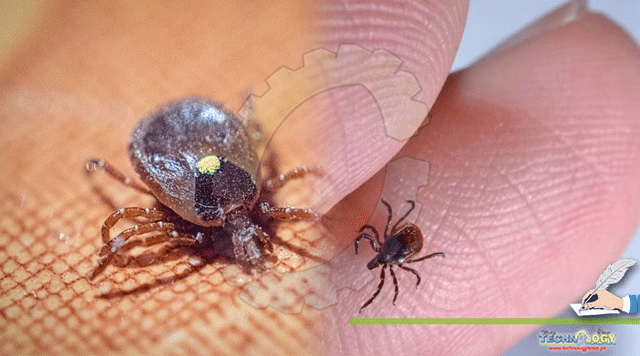Ticks are small blood-sucking ectoparasites, always remain as a potential disease-carrying organism (vector) for the transmission of various pathogens in vertebrate animals and humans.

By Sahar Younis,Dr Muhammad Sohail Sajid
These are responsible for the transmission of babesiosis, ehrlichiosis, anaplasmosis, theileriosis, and rickettsiosis and cause severe blood loss, reduce weight gain, decrease milk and meat production. Tick bite infestation is giving rise to huge economic and productivity losses as it affects the livestock industry. It has increased the number of tick-borne diseases, which had a negative influence on global health. Ticks account for the transmission of more harmful and communicable agents as compared to other blood-feeding organisms. Numerous control strategies including potential chemical and biological control have been adopted for the control of ticks. Unfortunately, due to continuous and non-judicious use of chemical formulations against ticks has developed resistance to these chemical formulations along with associating environmental concerns and contamination of meat and milk, which has presented a significant challenge to vector-borne disease control programs. Emerging tick control practice using nanoparticles in the field of nanoscience has been proved highly effective and has gained a wide and impressive range of research attention in the current vector-borne disease load scenario.
Nanoparticles are small particles ranging from 1-100 micrometers that cannot be seen without a microscope, having vital and potential properties in comparison to large particles. The word nano is derived from the Latin word nanus, which refers to very little size. These are prepared by using biologically, physical and chemical means. Among them, the biological method is inexpensive and didn’t require high pressure and temperature maintenance for nano synthesis. Nanoparticles are generally classified based on their shape, structure, origin, and purpose of administration. Different kinds of organic and inorganic (metals are being used by converting metals ions into nanoparticles for their various uses in medical and veterinary medicine. So far, metal, metal oxide, and carbon nanoparticles are synthesized using plant extracts (green fabrication) and chemical nano synthesis routes using chemicals. These differ in their effect on the targeted organism that is a tick based on the origin of their formulation. Metallic nano synthesis using plant extract is cost-effective and environmentally benign while chemical nano synthesis exhibits certain residual (residual) and environmental concerns.
The potential use of nanoparticles has curative benefits and use in making the visual presentation of certain diseases. The harmful and poisonous effects of nanoparticles are well explained and documented in various research. Adult and larvae killing capability of nanoparticles widely depend upon the synthesis of nanoparticles that is size, weight, and shape, given quantity (dose), and concentration and controlled inconsistency of nanoparticles, characterized and standardized by various techniques. The electron microscope is used for biological and physical characterization while the scanning electron microscope is used to describe the shape and size of the nanoparticle. Interaction between metal ions and organism stimulates the toxicity process.
Due to their small size, these particles adhere to the exoskeleton and reach different regions of the body. They do possess incredible potential in drug delivery due to their capacity to penetrate the cell causing high toxicity as compared to macro- particles. The toxicity mechanism of nanoparticles is based on releases of reactive oxygen species that are highly reactive chemical molecules produced, when encounters oxygen as a result of which cause leakage within the cell, disrupting cellular function. It may bind to the DNA of the targeted organism and damage it, ultimately results in the death of the cell by altering the natural mechanism inside the cell. However, the actual mode of action of nanoparticles against ticks is still unknown which needs to be explored. Further research on these metals should be focused to identify the potential acaricidal (tick-killing) mechanism of these nano synthesized particles. Nanoparticles have promising medical and veterinary benefits. Scientific research has revealed that it can be a modern and effective alternative to frequently used acaricides against which ticks have developed resistance, along with other tick bite preventive strategies to control tick-borne diseases and minimize the disease load. Beside the fact, that nanoparticles have a great medical and veterinary prospect, it also has environmental contamination concerns nearby of application. Nano synthesis of metal ions based on botanical origin is benign and ecofriendly.
The future research challenge is to evaluate and validate the negative effects of nanoparticles on the environment, non-targeted risks, and site of contamination that occurs due to the application of nanoparticle-based treatment. So, it is a need of the hour to explore further these advance and effective tick control practices having maximum potential and minimum environmental pollution. This can be a great step forward to lessen the economic losses and improve global health.
Authors: Sahar Younis DVM, M. Phil Parasitology University of Agriculture Faisalabad Dr. Muhammad Sohail Sajid Chairman, department of parasitology University of Agriculture Faisalabad.